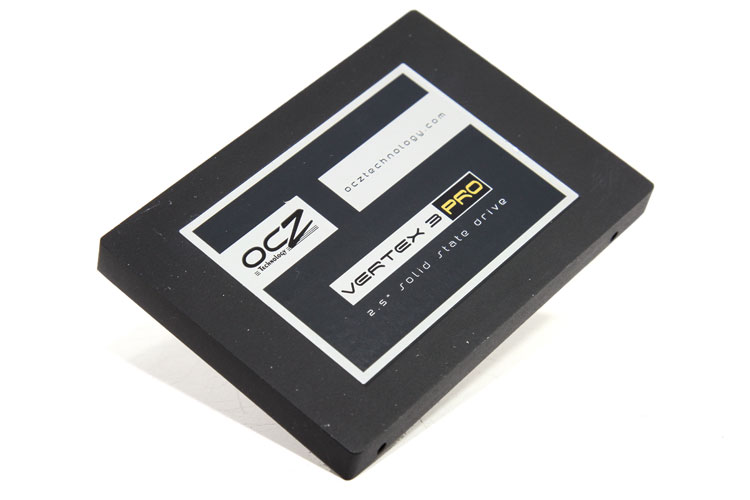Specifications and architecture
The SSD NAND FLASH partitions
So the storage unit we'll be testing today is a 200GB version. Here's how that works. OCZ places a NAND flash partition of 16 ICs onto one PCB.
The 200GB partition will get the all new SandForce 2582 (series 2000) Controller based IC assigned for multi-channel IO. SandForce, opposed to other controllers, enforces a trick as they can write to the FLASH memory less then the competition needs to by using real time compression. The SF controllers store a representation of your data and not the actual data itself. It does that by using a partition of the available NAND flash memory. This is why on SandForce based drives you do not see an extra memory cache chip, which in fact saves on the bill of materials used for the SSDs.
Now we mentioned it already, but the SF-2000 series controller will support up to roughly 500MB/s sequential read and write speeds, that's 62.5MB/s per one of the available eight channels. Combined the bandwidth is just really impressive for single non RAID drive.
OCZ merges one SandForce 2582 controller into the product and by the way, SF-2000 controllers support TRIM. Deduct a few GB per partition for real-time data compression and then you have your SSD ready. But all that data needs to travel over an interface ... of course.

OCZ Technology Vertex 3 PRO PCB with 16 Toshiba NAND flash memory ICs (8 on each side).
So what is SATA III (6G) all about ?
SATA 6G (SATA III), this latest revision of your SATA storage unit connectors, will increase the bandwidth on the SATA controller from 3 GBit/sec towards 6 GBit/sec. For a regular HDD that is not really very important. But with the tremendous rise of fast SSD drives this really is a large plus. Typically we get 3000 Mbit/s : 8 = 375 MB/sec bandwidth minus overhead, tolerances error-correction and random occurrences.
SATA III is doubling it up, as such we get 6000 Mbit/sec : 8 = 750 MB/sec (again deduct overhead, tolerances error-correction and random occurrences) of available bandwidth for your storage devices. As you can understand, with SSDs getting faster and faster that's just a much warmed and welcomed increase of bandwidth.
Put Sata III in RAID and you'll have even more wicked performance at hand. Most motherboards offer only two ports per controller though, so you are (for now) limited to RAID 0 and RAID 1 (mirror or stripe).
Also there are two controllers currently being used for mainstream, currently the Sandy Bridge P67 platform offers the highest performing solution. Though still fast, any platform using the Marvell 9128 or 9130 will see lower performance scores as the Marvell controllers use a PCI-Express Gen2 x1 lane interface to the system which restricts performance a little. The internal processor in this chipset also limits IOPS by the way.

